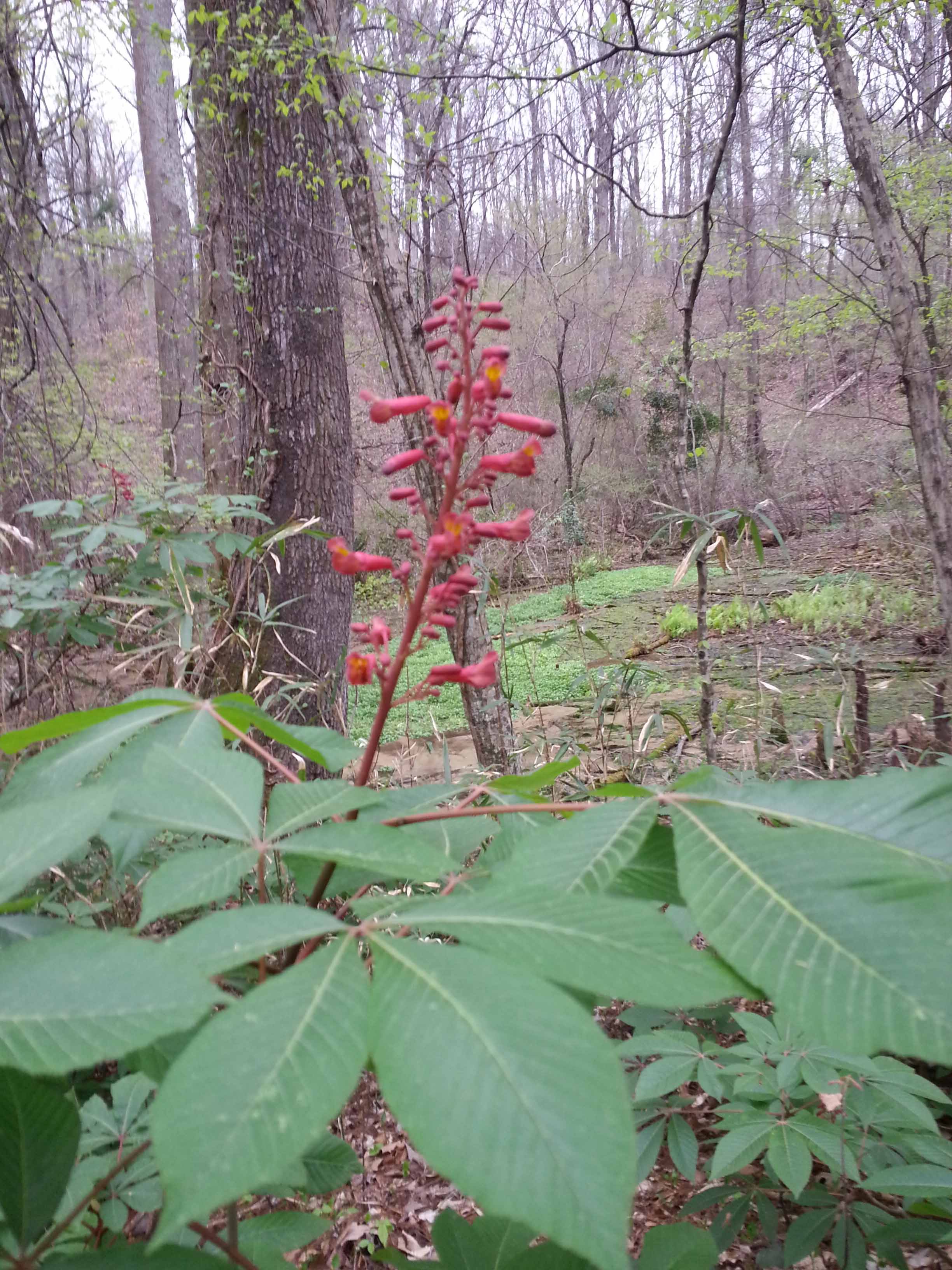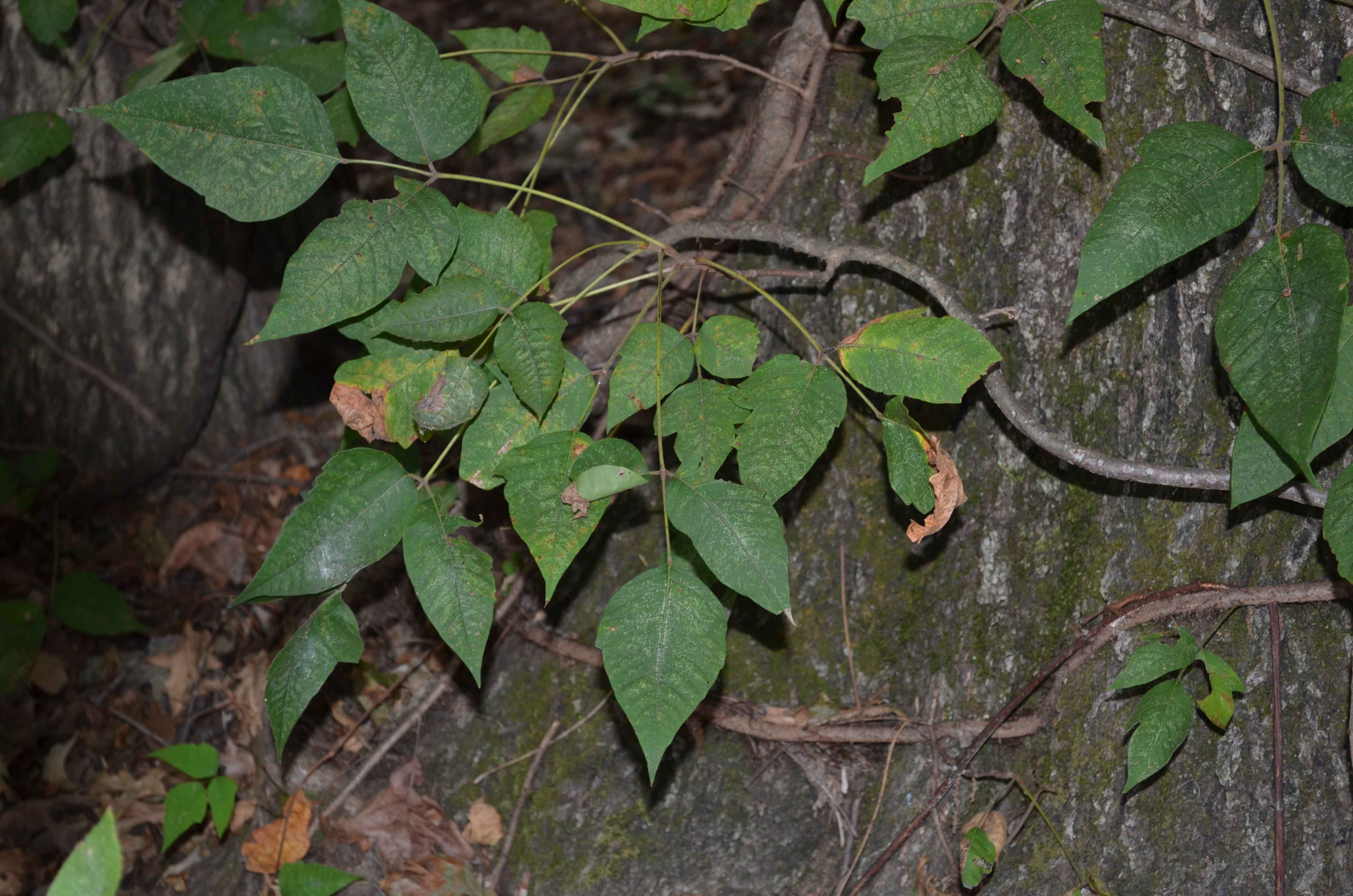
| Many plants are poisonous for humans to eat, for example the fruit of the buckeye (Aesculus pavia) contains alkaloids that can kill someone who eats them (Red Buckeye in flower shown on right). This alkaloid is so potent that native Americans would crush the fruit and place the powder into bags which were then sunk into water bodies to stun fish. The fish would then be moved to clean water and allowed to cleanse themselves of the poison before being eaten. The Greek philosopher Socrates was poisoned by by an infusion of poison hemlock (Conium maculatum). Jimsonweed (Datura stramonium) contain tropane alkaloids which are powerful hallucinogetics that are fatally toxic in only slightly higher amounts than the amount needed to create a hallucination. This property has resulted in numerous deaths from abuse by people who ingest it for the psychoactive effects. Animals foraging in fields with meager grazing may also be poisoned by ingesting jimsonweed as all portions of the plant are poisonous. |  |
AS A GENERAL RULE:
DO NOT EAT ANY PLANT FOUND IN THE WILD UNLESS YOU ARE ABSOLUTELY CERTAIN OF ITS IDENTITY AND SAFETY.
Here in the Delta there are numerous plants that are harmful or fatal and many that cause rashes, have thorns, etc. The one plant that is probably most important to know is POISON IVY (Toxicodendron radicans). This plant has potent alkaloid secretions on the leaves and stems and can cause serious rashes with intense itching. Some people are so allergic to the secretions that they have to get shots of anti-histamines if exposed to it. As you can see in the photo below left, the plant has three leaves on a stem. For young plants or early in the growing season, the leafstalks (the small stems that connect to the leaf) are usually red. Poison ivy is generally found growing as a vine on trees, buildings, etc., but may be found growing in dense clusters on the ground when climbing areas are unavailable.
